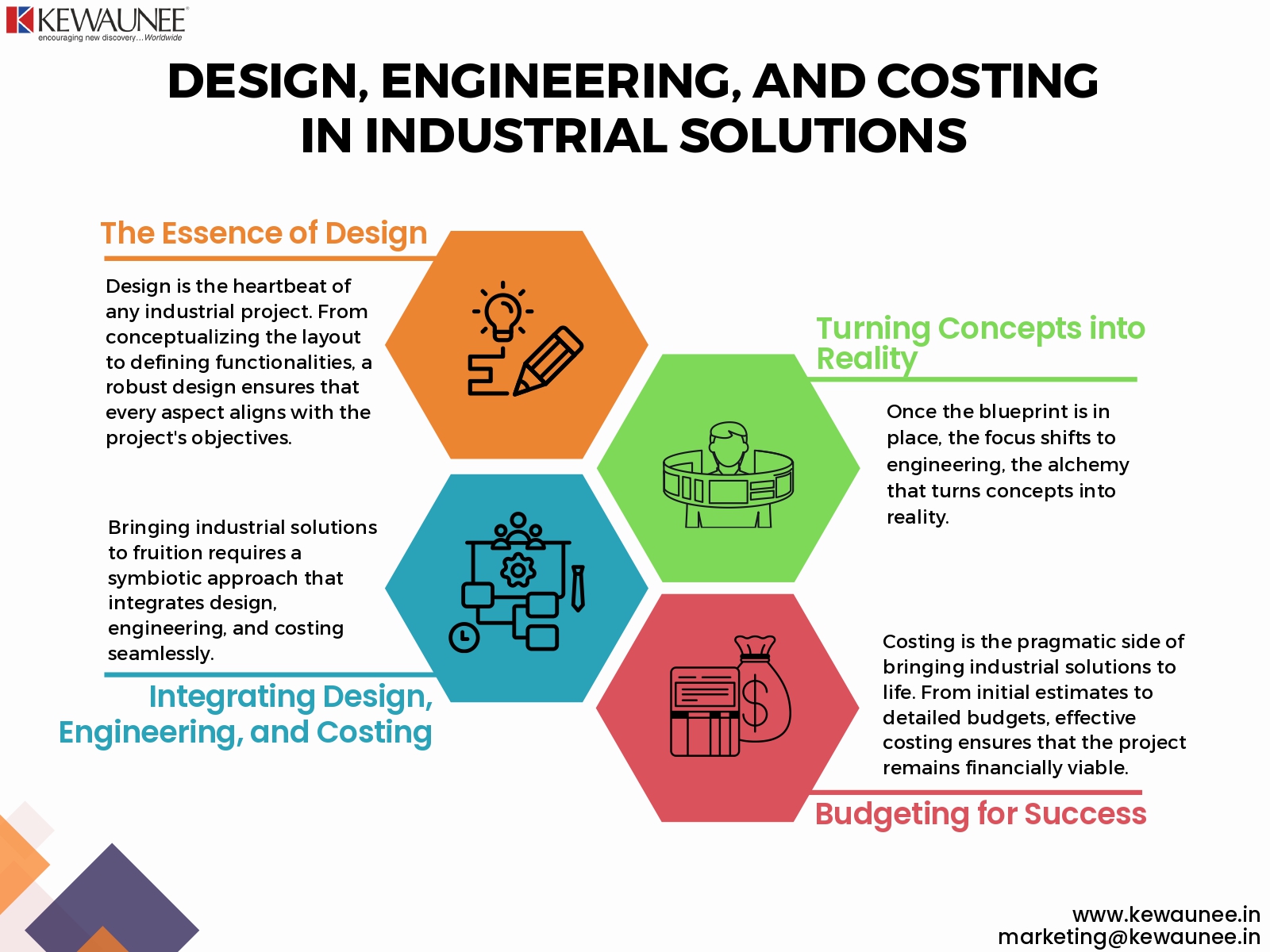Design, Engineering, and Costing in Industrial Solutions
Embarking on an industrial project is a journey from conceptualization to actualization. The pivotal stages of design, engineering, and costing are the linchpins that transform blueprints into reality.
This blog unveils the details behind these critical phases, shedding light on the intricacies of bringing industrial solutions to life.
1. Decoding the Blueprint: The Essence of Design
Design is the heartbeat of any industrial project. From conceptualizing the layout to defining functionalities, a robust design ensures that every aspect aligns with the project’s objectives. Decoding the blueprint is about translating ideas into a tangible plan that guides the entire project lifecycle.
In this phase, collaboration between architects, engineers, and stakeholders is key. Design encompasses everything from physical layouts to user interfaces, setting the aesthetic and functional tone for the project. Effective communication during this stage ensures that the blueprint accurately represents the project vision.
2. The Engineering Alchemy: Turning Concepts into Reality
Once the blueprint is in place, the focus shifts to engineering, the alchemy that turns concepts into reality. It involves the application of scientific and mathematical principles to design, analyze, and implement the project. From selecting materials to optimizing processes, engineering is the bridge between the conceptual and the tangible.
Engineering involves a meticulous consideration of factors such as structural integrity, safety standards, and material efficiency. The goal is to ensure that the project not only meets design specifications but also stands the test of real-world application. The collaboration between design and engineering is seamless, with each informing and refining the other.
3. The Art and Science of Costing: Budgeting for Success
Costing is the pragmatic side of bringing industrial solutions to life. From initial estimates to detailed budgets, effective costing ensures that the project remains financially viable. It involves a careful balance between quality, functionality, and financial constraints.
During the costing phase, project managers work closely with finance and engineering teams to align project requirements with budgetary considerations. This process involves estimating material costs, labor expenses, and potential contingencies. The goal is to create a realistic budget that covers all aspects of the project without compromising quality or timelines.
4. Integrating Design, Engineering, and Costing: A Symbiotic Approach
Bringing industrial solutions to fruition requires a symbiotic approach that integrates design, engineering, and costing seamlessly. Design informs engineering possibilities, engineering influences costing considerations, and costing shapes the parameters within which design and engineering operate.
The symbiotic approach involves continuous feedback loops between the three phases. Design changes may be necessary based on engineering constraints, and costing adjustments may be required to accommodate design enhancements. This iterative process ensures that the final industrial solution aligns with the initial vision while remaining within budgetary and technical boundaries.
Summary
The journey from blueprint to reality in industrial solutions is a multidimensional process that unfolds through design, engineering, and costing. Each phase is a crucial link in the chain, and their seamless integration determines the success of the overall project.
Decoding the blueprint, applying engineering alchemy, mastering the art and science of costing, and fostering a symbiotic approach between these elements are the secrets to transforming industrial visions into tangible and successful realities.
Comments are closed.











